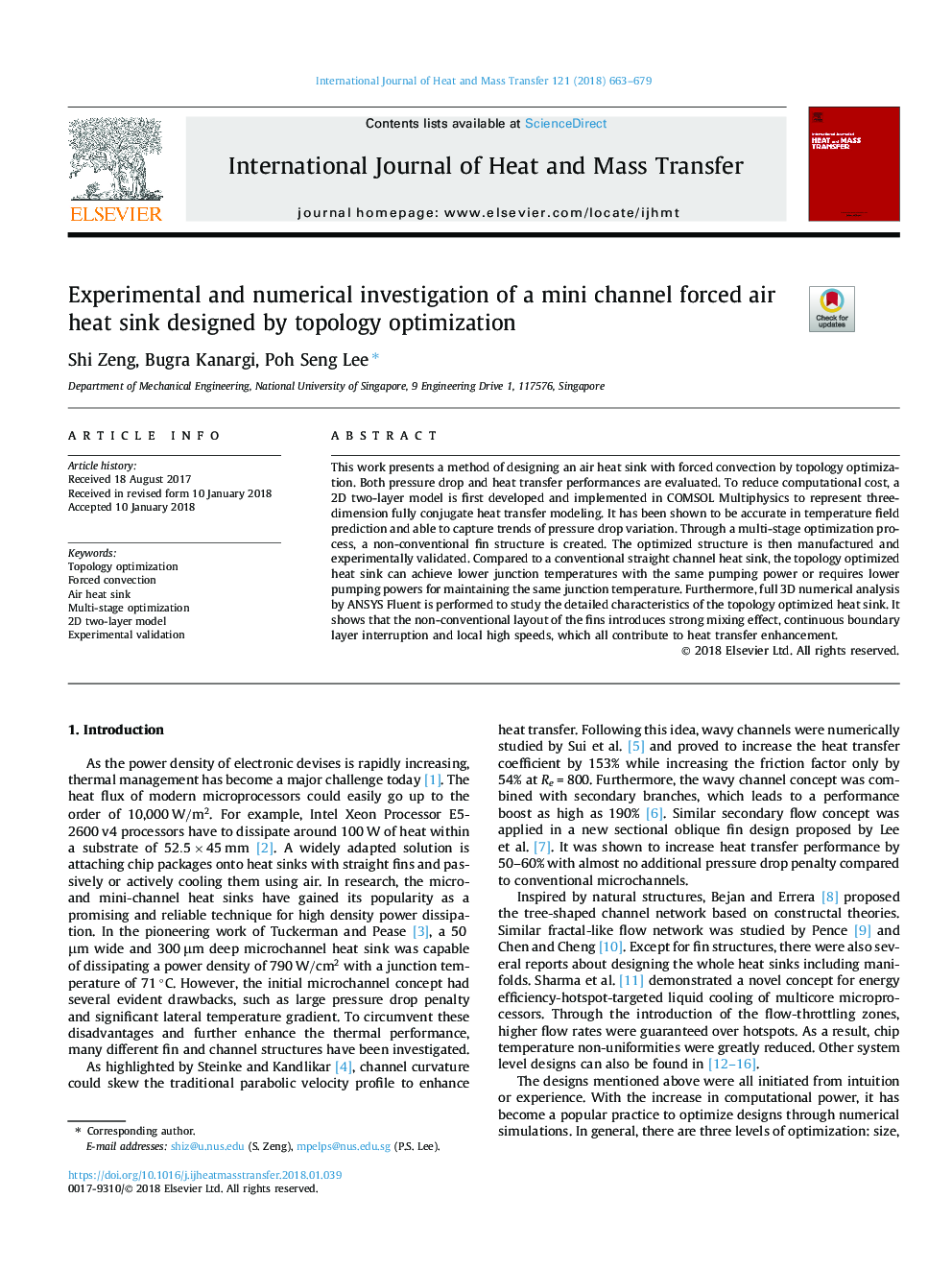| Article ID | Journal | Published Year | Pages | File Type |
|---|---|---|---|---|
| 7054503 | International Journal of Heat and Mass Transfer | 2018 | 17 Pages |
Abstract
This work presents a method of designing an air heat sink with forced convection by topology optimization. Both pressure drop and heat transfer performances are evaluated. To reduce computational cost, a 2D two-layer model is first developed and implemented in COMSOL Multiphysics to represent three-dimension fully conjugate heat transfer modeling. It has been shown to be accurate in temperature field prediction and able to capture trends of pressure drop variation. Through a multi-stage optimization process, a non-conventional fin structure is created. The optimized structure is then manufactured and experimentally validated. Compared to a conventional straight channel heat sink, the topology optimized heat sink can achieve lower junction temperatures with the same pumping power or requires lower pumping powers for maintaining the same junction temperature. Furthermore, full 3D numerical analysis by ANSYS Fluent is performed to study the detailed characteristics of the topology optimized heat sink. It shows that the non-conventional layout of the fins introduces strong mixing effect, continuous boundary layer interruption and local high speeds, which all contribute to heat transfer enhancement.
Related Topics
Physical Sciences and Engineering
Chemical Engineering
Fluid Flow and Transfer Processes
Authors
Shi Zeng, Bugra Kanargi, Poh Seng Lee,
